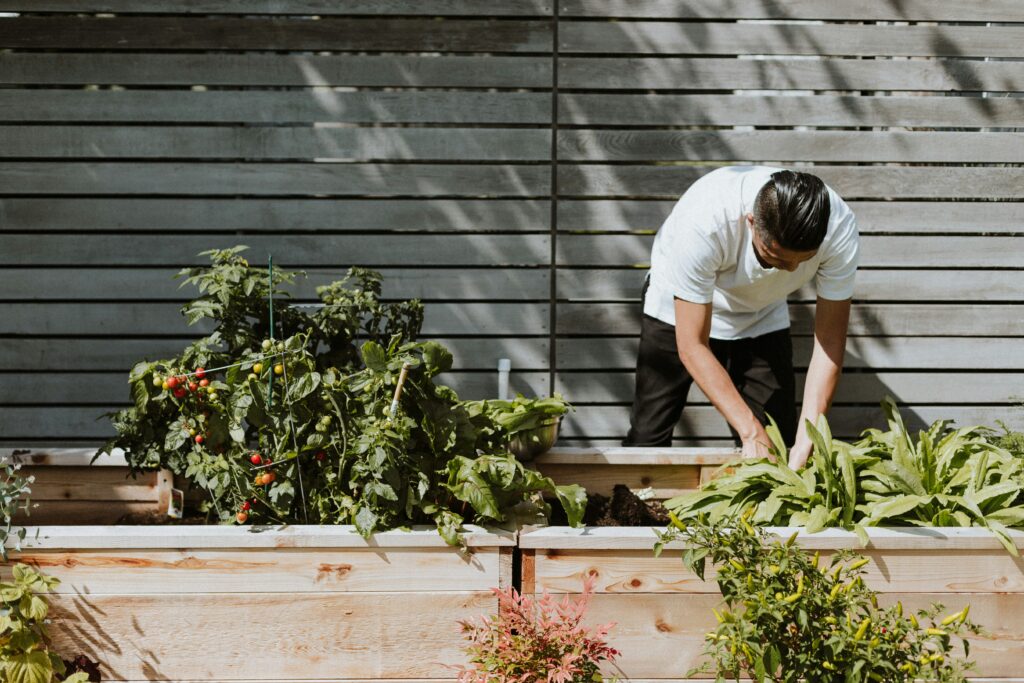
Imagine that on a spring noon, you step into your garden and pick some oregano to drizzle on your freshly baked pizza, wholesome, isn’t it?
It will definitely be a fresh addition to your cooking. Growing your own herbs and that too indoors will be a pleasing way to your cooking. There are many low-maintenance herbs like basil and mint, to hardy favorites like thyme and oregano, which can be easily grown in the home. These herbs are not just perfect for beginners but also require minimal care.
Let’s dive deep into the article to check how to grow homegrown aroma and taste.
10 Herbs To Grow Indoors Even in Your Kitchen
There is no match for the fresh herbs. You might have seen that packed herbs often have a certain smell which sometimes makes you leave them out of your dish for good.
But growing herbs indoors will change this for you; all they require from you is attention with water and sunlight, and they’ll thrive.
Let’s take a look at the herbs you can grow.
- Cilantro
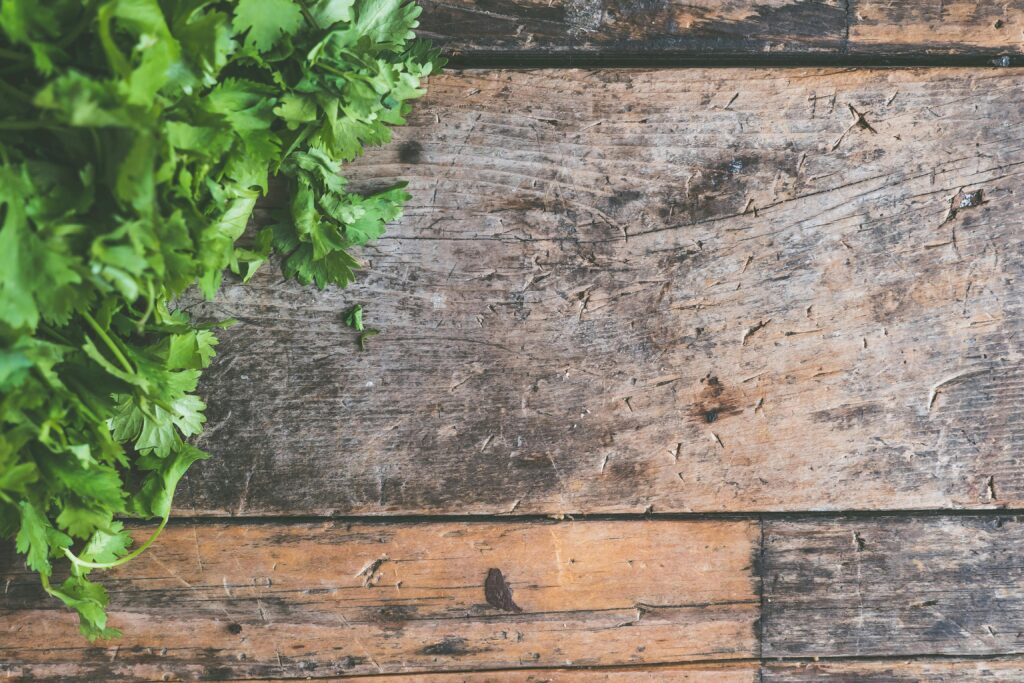
Cilantro adds a fresh, lemony kick to salsas, dips, and sauces. It’s popular in dishes worldwide, but it doesn’t last forever; after a few months, it flowers and turns bitter. So, to keep it fresh longer, you will need to trim it often.
What You Need To Do
To grow cilantro, use a plastic pot. Keep the soil damp and slightly humid. Put the pot in a spot where it gets plenty of light or some morning sunlight.
- Soil: Moist but well-draining, slightly acidic soil
- Lemongrass
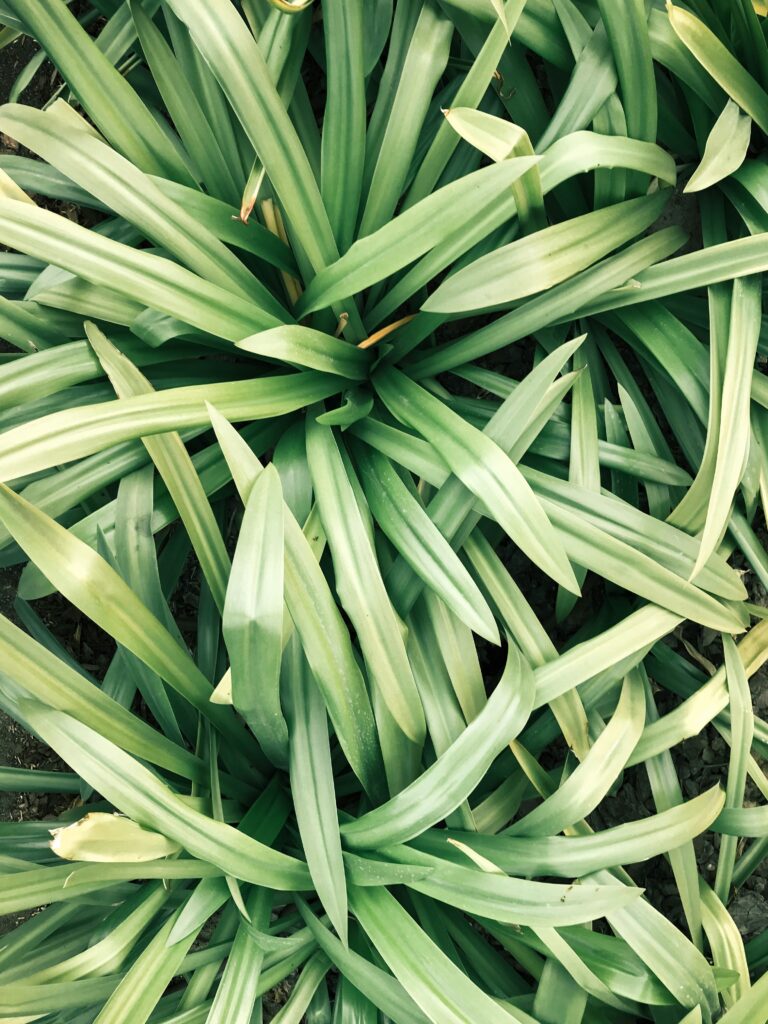
Lemongrass adds a fresh, lemon-ginger taste to soups, curries, sauces, and teas. It can grow up to 4 feet tall and 3 feet wide. Lemongrass grows best in warm areas.
- Sunlight: It also needs bright light, like the kind that comes through a south-facing window in winter.
- Soil: Use good-quality potting soil that lets water drain out easily but still stays a little damp.
- Thyme
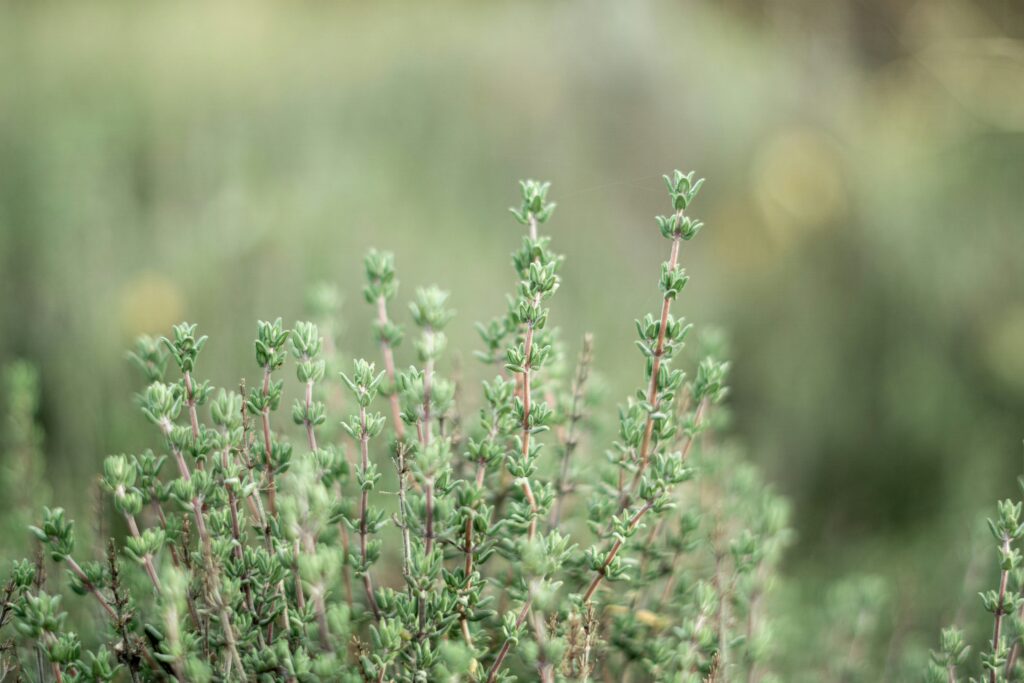
Thyme adds delicious flavor to meats and dishes. Some of its types are used in cooking, while others are used in making pretty ground covers in gardens. You should keep it in a bright, dry room with lots of sunlight.
Avoid humid spots like kitchens; thyme perfectly grows in dry air.
- Watering: You have to go easy as Thyme is drought-tolerant and hates soggy soil.
- Soil: It needs sharp drainage, and you can also skip heavy fertilizers.
- Rosemary
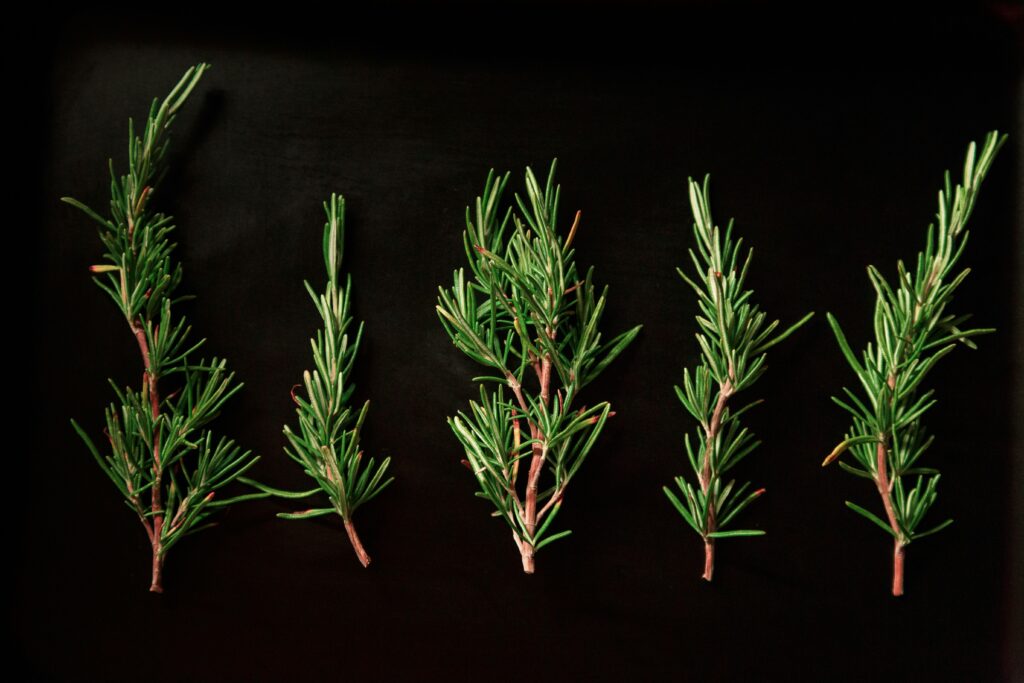
This is also a drought-resistant plant that grows into a large, woody bush over time. That, in simple words, means that you will have to use a big pot for it. Its leaves are often used in dips and drinks.
You will find Rosemary a little harder to grow indoors compared to some other herbs. That’s because it likes high humidity. To fix this, you can make a small tent around the plant to keep the moisture in.
- Needs: Place the plant where it gets direct sunlight from a south-facing window.
- Soil: It drains well, it also doesn’t need much fertilizer, and it only needs a little water
- Spearmint

Herbs from the mint family are very easy to grow, even inside. You can use it in drinks and tea. Spearmint is no doubt invasive in gardens, but in a pot, it can’t spread.
- Needs: It needs sunlight from a west-facing window during winter.
- Soil: Use soil that drains well and only needs a small amount of fertilizer.
- Parsley
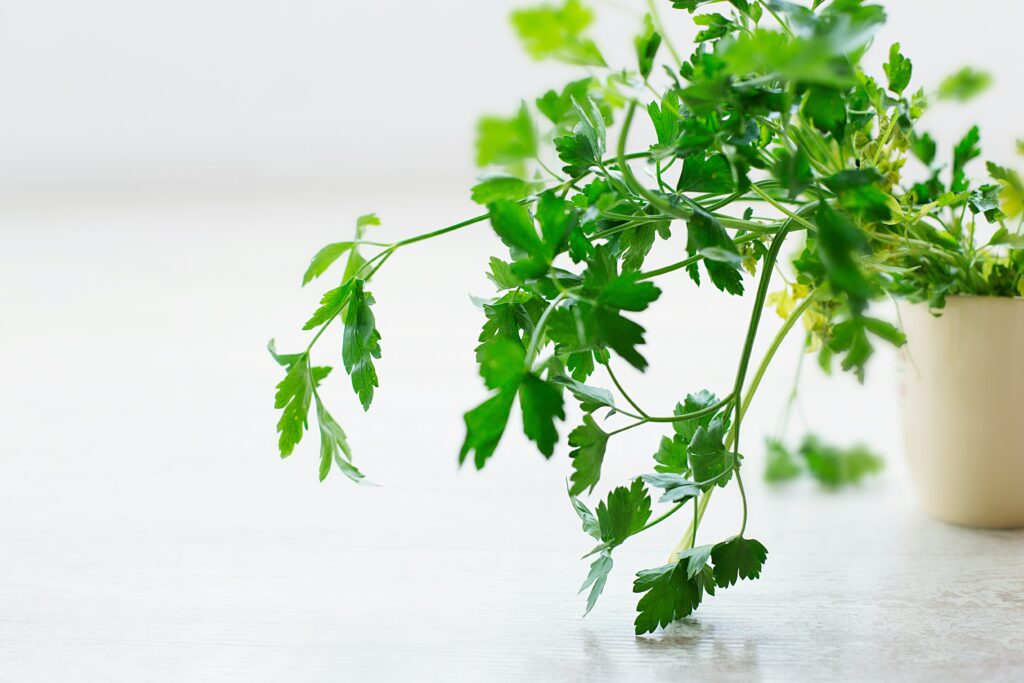
Parsley is a herb often used in Italian cooking. It grows for about two years and comes in two types:
- The curly kind: It has two ice and is mostly used for decoration
- The flat-leaf kind: It has a stronger flavor and is better for cooking
This herb blends perfectly into pestos, dips, and sauces.
- Soil: It needs soil that drains well but still stays a bit moist.
- Oregano
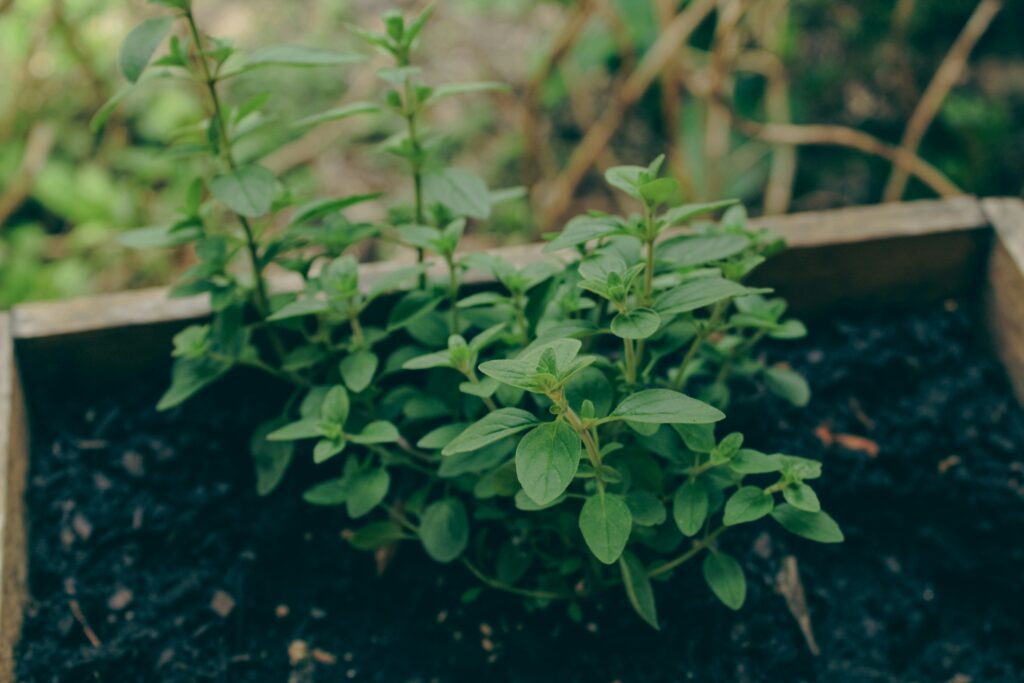
It is a drought-resistant plant that’s great for seasoning Italian food, sandwiches, and pizza. It is easy to grow indoors.
Oregano doesn’t need as much moisture in the air as rosemary, but it still enjoys a little extra humidity.
- Soil: Use well-draining soil and water it just a little.
- Lemon Balm
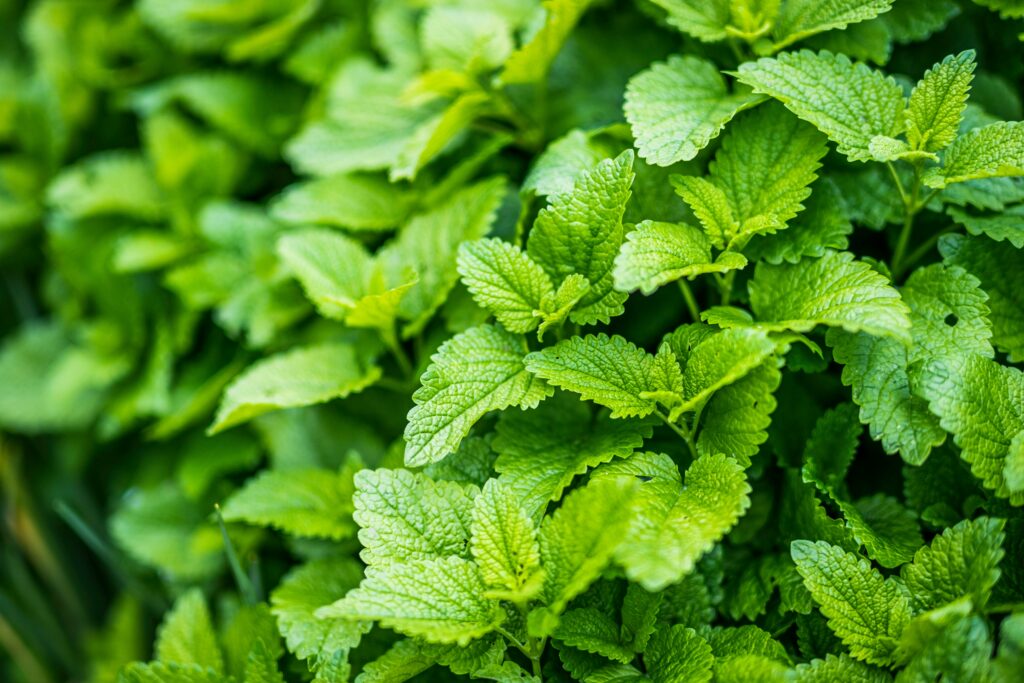
Lemon balm is great to add to soups or salads as it gives them a fresh, lemon-like taste. This plant can get fungal diseases, so you have to take care of it a lot.
- Soil: It needs soil that drains well and only needs a normal amount of water.
- Chervil
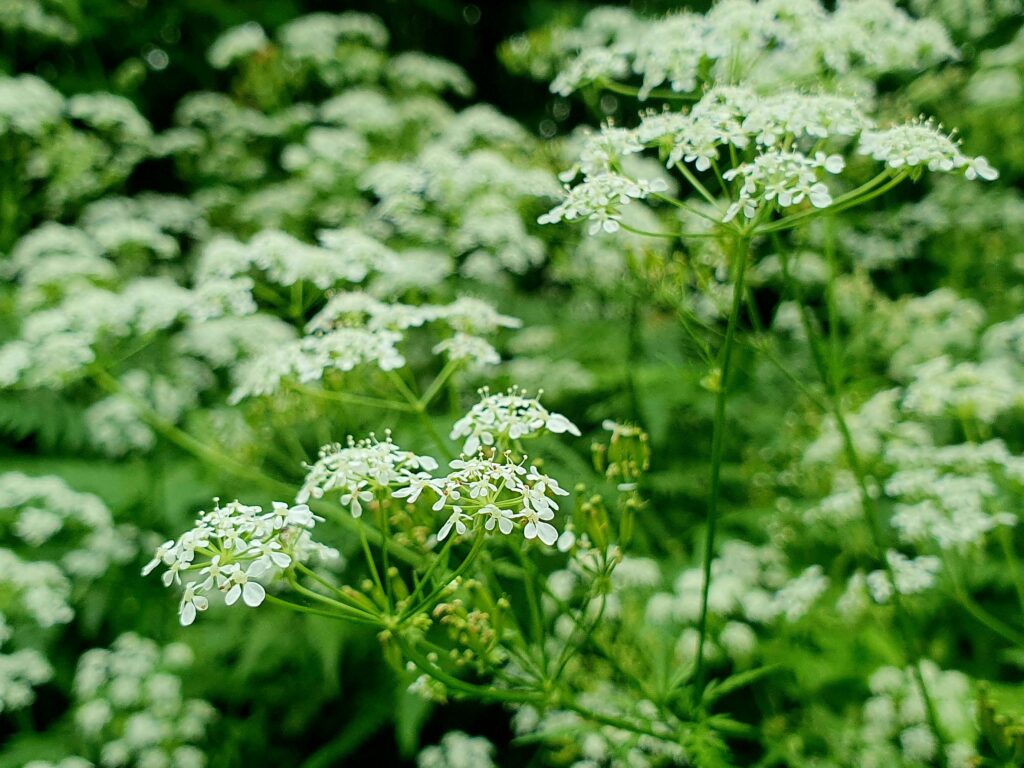
Chervil is a gentle herb similar to parsley. It is often used in French cooking and has a mild taste like black licorice.
- Soil: It needs well-drained soil that stays moist and doesn’t need much fertilizer
- Dill

Dill is a popular herb often used in pickles. It has a fresh, bright flavor that’s a bit like celery or fennel. It adds great taste to:
- Salads
- Soups
- Sauces
- Dips
- Dressings
You can collect the seeds when they turn brown and use them in cooking, too.
- Soil: It needs well-drained, rich, and loose soil
Conclusion
It is time to grow your favourite herbs at home!
Do you think there is a point in buying herbs when you can grow them on your windowsill, and that too with just a little water and sunshine? So, next time, your cilantro to rosemary should come from your space.

